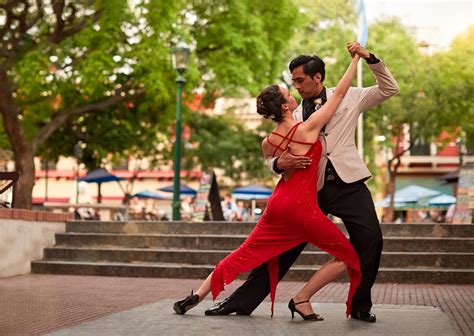The allure of salsa dancing is undeniable, with its vibrant rhythms and energetic movements that can get anyone’s heart racing. For those eager to master the art of salsa, understanding the fundamental steps is crucial. Spanish, being one of the languages closely associated with the origins of salsa, can add a layer of authenticity and depth to the learning process. Here’s a beginner’s guide to 12 dancing steps in Spanish to help you master salsa, blending language and dance in a harmonious way.
1. Posición Inicial (Initial Position)
- Description: Start with your feet together, with your weight evenly distributed between both feet. For leaders (usually men), the left foot should be slightly forward, and for followers (usually women), the right foot should be slightly forward.
- Spanish Tip: “Pies juntos” means “feet together,” a good phrase to remember for the initial position.
2. Paso Básico (Basic Step)
- Description: The basic step for salsa involves taking a step to the side with one foot and then bringing the other foot to meet it, while transferring your weight. For leaders, this means stepping to the side with your left foot and then bringing your right foot to meet your left. For followers, step to the side with your right foot and then bring your left foot to meet your right.
- Spanish Tip: “Paso a la izquierda” for leaders (step to the left) and “paso a la derecha” for followers (step to the right).
3. Paso Lateral (Side Step)
- Description: This involves stepping to the side with the foot that is free (for leaders, the right foot; for followers, the left foot) and then bringing the other foot to meet it.
- Spanish Tip: “Paso lateral” is straightforward, indicating a step to the side.
4. Cruce de Piernas (Crossing Feet)
- Description: This step involves crossing one foot over the other. Leaders cross their right foot over their left, and followers cross their left foot over their right.
- Spanish Tip: “Cruzar las piernas” means to cross your legs, similar to the action in this step.
5. Giro (Turn)
- Description: Turns are an essential part of salsa dancing. For a basic turn, the leader guides the follower to turn either clockwise or counterclockwise, depending on the leader’s movement.
- Spanish Tip: “Dar vueltas” means to turn around, and “giro” specifically refers to a turn.
6. Paso de Regreso (Step Back)
- Description: Sometimes, the leader will step back, prompting the follower to step forward. This is an essential movement to master timing and connection.
- Spanish Tip: “Paso hacia atrás” for stepping back.
7. Paso de Avance (Step Forward)
- Description: Conversely, stepping forward is crucial, especially for the follower when the leader steps back.
- Spanish Tip: “Paso hacia adelante” means stepping forward.
8. Movimiento de Caderas (Hip Movement)
- Description: Salsa is not just about footwork; hip movement is vital for the rhythm and flair of the dance.
- Spanish Tip: “Mover las caderas” means to move your hips, an action that comes naturally with practice.
9. advertiser Cross-Body Lead
- Description: This involves the leader guiding the follower across their body, creating a beautiful and dynamic movement.
- Spanish Tip: While there’s no direct translation, “conducir a través del cuerpo” captures the essence of guiding someone across your body.
10. Doble Paso (Double Step)
- Description: A double step involves taking two steps in the same direction, which can be either forward, backward, or to the side.
- Spanish Tip: “Dar dos pasos” means to take two steps, a straightforward description of this action.
11. Paso Rápido (Quick Step)
- Description: Quick steps are essential in faster salsa rhythms. They require precision and practice to execute smoothly.
- Spanish Tip: “Paso rápido” directly translates to quick step, emphasizing the speed of the movement.
12. Paso Lento (Slow Step)
- Description: Counter to the quick step, slow steps provide a moment of calm and connection between partners, often used to transition between different movements or to end a routine.
- Spanish Tip: “Paso lento” means slow step, crucial for balance and harmony in the dance.
FAQ Section
How long does it take to master salsa steps in Spanish?
+Mastery of salsa steps, including understanding and executing them in Spanish, varies from person to person. Consistent practice, ideally with a professional instructor, can significantly reduce the learning time. Understanding the Spanish terminology can enhance the learning process by connecting the dancer more closely with the dance's cultural origins.
What's the importance of learning Spanish for salsa dancing?
+While salsa can be learned and enjoyed without speaking Spanish, understanding key terms and phrases can deepen your connection to the dance. It allows for better communication with instructors, partners, and the salsa community, especially in Spanish-speaking countries where salsa has its roots.
Can I learn salsa by myself, or do I need a partner?
+While it's possible to learn the basic steps and rhythm of salsa by yourself, having a partner can greatly enhance your learning experience. A partner allows you to practice leads and follows, which are crucial for improving your timing, connection, and overall dance quality. Many dance studios offer classes for singles, where you can find a temporary dance partner and learn in a supportive environment.
In conclusion, mastering the 12 dancing steps in Spanish for salsa is a journey that combines physical movement, cultural connection, and linguistic understanding. Each step, from the initial position to the quick and slow steps, requires practice, patience, and dedication. By embracing the Spanish language and its role in salsa, dancers can enrich their experience and deepen their appreciation for this vibrant and expressive dance form. Whether you’re a beginner or an experienced dancer, the world of salsa promises excitement, challenge, and the joy of movement and music.



